#Guideways Through Mountains and Seas
Text
Xiangliu

Image © deviantArt user YunaXD, accessed at her gallery here
[Sponsored by @coldbloodassassin. The xiangliu appears in Guideways through Mountains and Seas as an individual, Xiangliu, who is the minister of the malevolent water god Gonggong. I did consider making it a native or even extraplanar outsider because of that, but ended up going with aberration to stress its connection to nagas. Not that nagas are very aberrant as far as aberrations go...]
Xiangliu
CR 14 NE Aberration
This creature is an oversized serpent with nine heads and slime coating its scales. Its heads are disturbingly humanoid, but still bear fangs and forked tongues.
Xianglius are sadistic water serpents that delight in spreading disease and stagnant water. They are native to swampy lands, and fight violently against any attempt to drain such swamps or make them suitable for cultivation. Nearby fields are likely to be subject to their attacks, including flooded crops, summoned clouds of malarial mosquitoes and fouling wells and springs. Xianglius sometimes find allegiances with evil druids, daemons of pestilence and famine, or even gods of water who are hostile to civilization.
A xiangliu rarely hesitates to fight. Their bites are not fully venomous, but carry a foul slime that renders creatures bitten weak and queasy. They can spit jets of water with lethal force, and often split their attacks, biting creatures up close while barraging enemies that are more distant. Fighting a xiangliu is often quite frustrating, as the monsters create moats of mud and water to slow anyone approaching on foot, and can manipulate water to isolate and capsize boats. Wise adventurers approach a xiangliu’s lair from the air.
Despite their nine heads, a xiangliu has only one personality; peevish, cruel and sadistic. They are notorious gluttons; one legend is that they have nine heads in order to eat nine different meals at the same time. A xiangliu grows to about twenty feet long. Their lifespans are measured in centuries.
Xiangliu CR 14
XP 38,400
NE Large aberration (aquatic)
Init +6; Senses all around vision,darkvision 60 ft., Perception +22, scent
Defense
AC 29, touch 15, flat-footed 23 (-1 size, +6 Dex, +14 natural)
hp 190 (20d8+100)
Fort +13, Ref +15, Will +16
DR 10/magic; Immune acid, disease, poison, sickness and nausea effects; SR 25
Offense
Speed 30 ft., swim 40 ft.
Melee 9 bites +20 (1d6+4 plus sickening slime)
Ranged 9 water jets +20 (1d8 bludgeoning plus push)
Space 10 ft.; Reach 10 ft.
Special Attacks combined arms, mud wave, push (5 ft.)
Spell-like Abilities CL 15th, concentration +20 (+24 casting defensively)
At will—contagion (DC 18), putrefy food and drink
3/day—control water, insect plague
1/day—plague storm (DC 21), transmute rock to mud
Statistics
Str 19, Dex 23, Con 20, Int 18, Wis 19, Cha 20
Base Atk +15; CMB +20; CMD 36 (cannot be tripped)
Feats Blind Fight,Combat Casting, Combat Reflexes (B),Deadly Aim, Great Fortitude, Improved Critical (bite), Lightning Reflexes, Point Blank Shot, Precise Shot, Skill Focus (Stealth), Weapon Finesse
Skills Acrobatics +22, Climb +20, Heal +18, Intimidate +21, Knowledge (arcana, geography) +18, Knowledge (nature) +20, Perception +22, Sense Motive +17, Spellcraft +20, Stealth +24, Swim +28; Racial Modifiers +2 Perception
Languages Aquan, Common, Draconic
SQ amphibious, improved swamp stride, multiheaded reflexes
Ecology
Environment any swamps and aquatic
Organization solitary
Treasure standard
Special Abilities
Combined Arms (Ex) When using a full attack action, a xiangliu can divide its nine attacks up between bites and water jets.
Improved Swamp Stride (Su) A xiangliu can move without penalty through natural or magically manipulated mud, water, or vegetation native to swamp environments.
Insect Plague (Sp) When a xiangliu uses its insect plague spell-like ability, it summons mosquito swarms instead of wasp swarms.
Mud Wave (Su) As a standard action, a xiangliu can create a burst of mud and water in a twenty foot radius centered on itself. All creatures in the area take 14d6 points of bludgeoning damage and are knocked prone. A DC 25 Reflex save halves the damage and negates the prone effect. The area affected by the mud wave becomes difficult terrain for the next minute. A xiangliu can use this ability three times per day, but must wait 1d4 rounds between uses. The save DC is Charisma based.
Multiheaded Reflexes (Ex) A xiangliu gains Combat Reflexes as a bonus feat. It can make as many attacks of opportunity in a round as it has heads.
Sickening Slime (Ex) A creature bitten by a xiangliu must succeed a DC 25 Fortitude save or be sickened for 1 round. Failing additional saves increases the duration of the sickened effect by 1 round per save failed. The save DC is Constitution based.
Water Jet (Su) A xiangliu can spit water from one of its mouths as a standard action, and up to all nine as a full attack. Treat each water jet as a ranged attack from a projectile weapon with a range increment of 20 feet. Attacks with water jets do not provoke attacks of opportunity. A creature struck by a water jet takes 1d8 points of bludgeoning damage and is exposed to the xiangliu’s push attack.
#pathfinder 1e#aberration#xiangliu#hydra#naga#guideways through mountains and seas#chinese mythology#sponsored post
51 notes
·
View notes
Photo
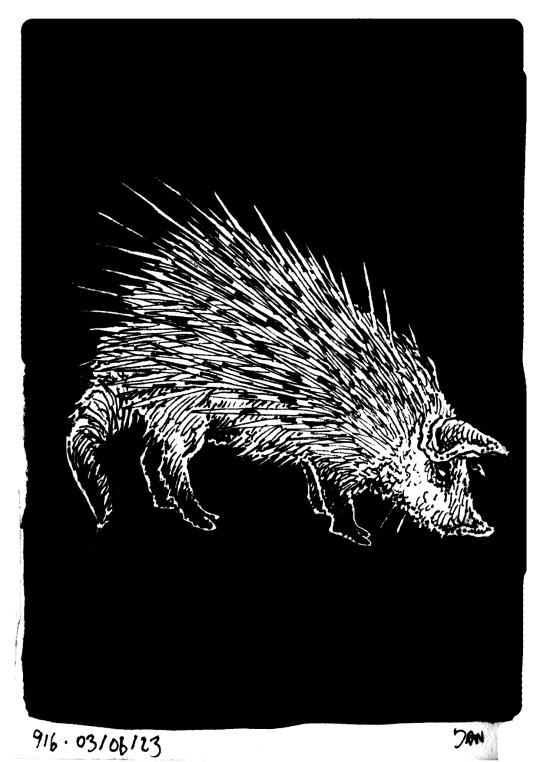
Haozhi (Brave pig), the 229th Known One.
“Fifty-two li west stands Bamboo Mountain, whose summit contains many tall trees. There is an abundance of iron on its northern slope and a plant here named the Yellow Guan-Plant. Its form ressembles that of an ailanthus, while it’s leaves ressemble those of the hemp plant with white flowers and blood-red fruit. Adding it to a bath will cure itching, and it can also cure tumors.
The Bamboo River emanates from here and flows northward into the Wei. Along its northern banks grows an abundance of arrow-bamboo and dark green jade. The Cinnabar River emanates from here and flows southeast into the Luo River. Much rock crystals and many Human-Fish are found in it. There is a beast here whose form resembles a pig with white bristles with black tips as large as hairpins. It is called the Haozhi.” - Guideways Through Mountains and Seas
#i love how reading this book feels like a map#full of adventure wildlife and ressources#Shanhaijing#folklore#China#Asia#Haozhi#Brave pig#pig#porcupine#chimera#monster#bestiary#creature design#ink#Guideways Through Mountains and Seas#916#octem 115#aqva 4#the Known Ones
157 notes
·
View notes
Text
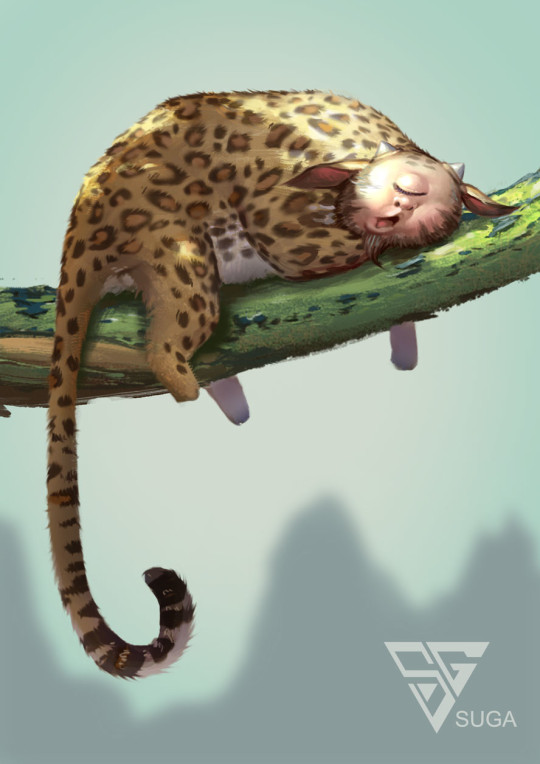
The Zhujian [Chinese mythology]
According to the ancient Chinese Shan Hai Jing (the ‘classic of mountains and seas’), there is a place called Single-Sheet Mountain. The location of this mountain, if it even corresponds to a real-life place, is unclear, but it features a desolated high-altitude landscape where no trees or other plants grow.
Several strange creatures call these heights home, one of which is the Zhujian. The most striking characteristic of this bizarre beasts is its human head, while its body resembles that of a leopard. It has a singular eye in the middle of its face, and its ears resemble those of an ox. The Zhujian has a remarkably long tail, which it holds in its mouth when moving. When the creature sits down, its long tail is coiled.
Not much is known about these creatures, but the Shan Hai Jing also mentions that it is known for making angry shouts.
Source:
Strassberg, R. E., 2002, A Chinese Bestiary: Strange creatures from the Guideways through the Mountains and Seas, 313 pp., p.123-124.
(image source: SUGA良仁 on Artstation)
59 notes
·
View notes
Text
Yu the Great and Sun Wukong's Staff
This is my answer to the following reddit question:
Did the Ruyi Jingu Bang, as a tool used by Da Yu, exist before the novel?
Monkey's golden-hoop iron staff can be traced to the khakkhara and iron rod respectively used by his precursor in the 13th-century JTTW. The story doesn't mention anything about Yu the Great. The demi-god's connection to the staff is, as far as I know, unique to the standard 1592 edition of JTTW.
This association probably came about in a couple of ways. For example, there is a Chinese graphic similarity (and possible totemic connection) between Yu and a specific kind of monkey:
The generic Chinese primate names have identical pronunciations or spellings to those of the earliest Chinese emperors. For instance, the character 猱 (Nao) is considered as the ancestral name of the royal family of Shang dynasty (商朝 ca. 1600–1050 BCE) (Cao, 1997; Wang, 2001). This word is used to denote a primate species that is good at climbing. Similarly, the character 禺 (Yu) represents a long-tailed monkey. This word is the same as the character 禹 (Yu), a legendary emperor well known for his brilliance in regulating floodwater (Huang, 2011). This association between primates and the earliest emperors indicates a possible totemic status for primates (Niu, Ang, Xiao, et al., 2002, p. 91).
(The aforementioned Yu (禺) monkey was apparently well-known, for it is referenced several times in the Classic of Mountains and Seas (Shanhai jing, 山海經, c. 4th-century to 1st-century BCE), a popular Chinese bestiary, in order to indicate the shape and size of certain primate-like animals (Strassberg, 2002, pp. 83, 84, 91, 99, 104, 122, 123).)

Also, Yu is known for imprisoning Wuzhiqi (無支奇 / 巫支祇), a monkey flood demon, beneath a mountain in Tang and Song-era folklore. This likely influenced Sun Wukong's punishment under Five Elements Mountain.
Therefore, all of this probably led to the author-compiler of the 1592 JTTW associating Monkey's staff with Yu the Great and his efforts to end the world flood.
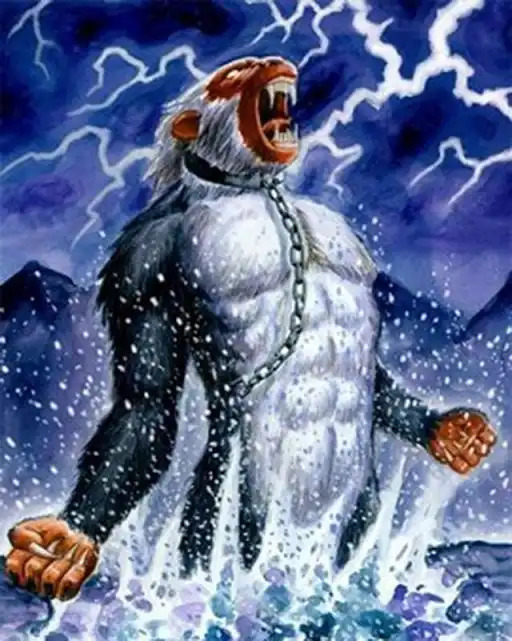
Sources:
Niu, K., Ang, A., Xiao, Z. et al. (2002). Is Yuan in China’s Three Gorges a Gibbon or a Langur? International Journal of Primatology, 43, 822–866. https://doi.org/10.1007/s10764-022-00302-1
Strassberg, R. (2002). A Chinese Bestiary: Strange Creatures from the Guideways Through Mountains and Seas. University of California Press.
#Da Yu#Yu the Great#Sun Wukong#Monkey King#Journey to the West#JTTW#Wuzhiqi#flood demon#monkey#Shanhaijing#Classic of Mountains and Seas#Magic Staff#Ruyi jingu bang#Gold-banded staff#Lego Monkie Kid#LMK
53 notes
·
View notes
Note
Do you know of a downloadable pdf of The Classic of Mountains and Seas?
Hello!
Yes absolutely. My friend @the-monkey-ruler has kept a reliable archive of these kinds of media where you don’t need to pay to access them.
I have a different PDF called A CHINESE BESTIARY Strange Creature’s from the GUIDEWAYS THROUGH MOUNTAINS AND SEAS that I can’t attach to this answer. If you are comfortable and interested in this other version, please reach out directly and I can arrange sending the full pdf to you.
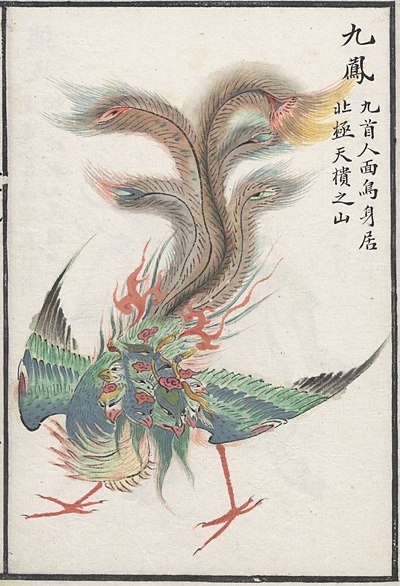
Here is a nine headed phoenix from a Qing edition

Nine tailed fox, companion of the Queen Mother of the West
#chinese religion#chinese mythology#chinese folklore#chinese literature#chinese culture#mountains and seas classics
33 notes
·
View notes
Note
Is there a site that talks about Chinese creatures like the Qilin? (or with a more detailed description or pictures, sometimes I find old paintings, but since they are old, the design is not very clear)
I put a wiki link in my last post but I can give you a Baidu link I guess. But I'm not sure if there is a sight just for Chinese yaoguai or Chinese legends. I've seen one made for Yoaki but for Yaoguai I can't find any. If anyone knows a good category sight please let me know!
I only know a few books that cover these things so hopefully that could help.
A CHINESE BESTIARY Strange Creatures from the GUIDEWAYS THROUGH MOUNTAINS AND SEAS
Fantastic creatures of the mountains and seas : a Chinese classic
Chinese Mythology: An Introduction
Handbook of Chinese Mythology
Hope that helps!
23 notes
·
View notes
Text
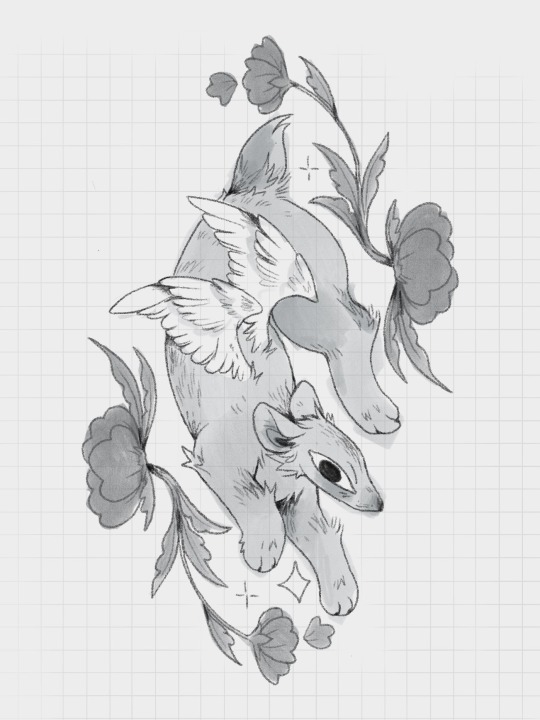
« The Feishu is a creature from ancient bestiaries of China. It had the body of a rabbit with the head of a rat. It was able to fly by wings on its back. The picture of a Feishu is a historical pen and ink drawing from a later edition of the Chinese book Guideways Through Mountains and Seas. (4th century - 1st century B.C.E.). »
#illustration#my art#artists on tumblr#digital art#sketch#doodle#ink#artblr#cryptid#cryptidcore#cryptid club#cryptozoology
23 notes
·
View notes
Text
Tagged by: @theoutcastrogue
Favorite Color: Sky blue. Light blues and cyans. White. Off-white colors and silvers (metallic white). Sometimes black, mostly as accent. Sometimes others.
Currently Reading: Nothing. I have A Chinese Bestiary: Strange Creatures from the Guideways through Mountains and Seas by Richard E. Strassberg (ISBN 0-520-21844-2) and Dor Witchor, Book 1: The Last Wish checked out, but haven't touched them yet.
Last Song: PuppyCat saying "Pretty Patrick." On loop. I'm obsessed with the audio clip.
The last piece of music I listened to was "Fantasia of the Wind" from Record of Lodoss War as part of a random YouTube jaunt.
Last TV Show: Bee and PuppyCat. I was in-between shows after finishing Stranger Things, so started watching this on a suggestion from a friend/as a check on my to watch list. It's watchable, but I think it's mostly garbage.
Sweet/Savory/Spicy: Aside from kimchi, I hate spicy things. Savory is good for most of what I want to eat. Sweet things are also good, but they can't be too sweet; dark chocolate is by far superior to milk chocolate.
Currently Working On: Clearing out photos from my phone. I don't take photos; I download them from Tumblr if I think they're semi-good, then end up with a bajillion and can't find the ones I actually like.
tagging @injuries-in-dust @jadewing and @goddamn-nicolas
4 notes
·
View notes
Text
A camel’s head, a deer’s horns and a demon’s eyes. A bull’s ears, a snake’s neck and a clam’s belly. A carp’s scales, an eagle’s claws and a tiger’s paws. Pieced together, these disparate physical features yield an illustrious creature of Chinese legend: the dragon.
Believed to soar through the waters and heavens as a nature deity ruling over the rains, the dragon is a dominant figure in Chinese mythology, perched at the center of longstanding creation tales. Ancient legends depict the mythical being, called long in Chinese, descending to the ground with the fog and rising out of the ocean with the sun, moving the seasons in its wake. Initially a vague motif in ancient Chinese art, the dragon is now an emblem of benevolent divinity, imperial power and sweeping unity. Its symbolism builds on thousands of years of folklore and Chinese history. And, as the only mythological animal in the Chinese zodiac system, the dragon takes on yet another layer of meaning.
The Chinese zodiac consists of 12 animals—the rat, ox, tiger, rabbit, dragon, snake, horse, goat, monkey, rooster, dog and pig—that alternate every Lunar New Year. Though the timing of the Lunar New Year changes based on cycles of the moon, the celebration generally falls between January 21 and February 20, beginning with the second new moon after the winter solstice. Every Lunar New Year, a new zodiac animal takes over the reins of fate. Its character guides the course of the year, and individuals born under its sign are said to adopt its behavior, character traits and compatibility standards.
Arriving fifth in the sequence, the dragon is the most potent—and most desired—zodiac symbol. It “catalyzes all the powers of nine animals and is therefore considered very supreme,” says Richard E. Strassberg, an expert on Chinese culture and the author of A Chinese Bestiary: Strange Creatures From the Guideways Through Mountains and Seas. “There [is] an overwhelming mixture of respect and hope in invoking the dragon’s powers.”
When the Year of the Dragon arrives, birth rates in China tend to boom. Many parents believe that a child born during this year, a lucky dragon baby, will be destined for success. Though this perception is often a self-fulfilling prophecy, with parents investing greater resources in their dragon child, the extraordinary expectations surrounding the zodiac creature speak to its deep associations with intelligence, authority and good fortune. This year, the dragon will take the helm from the rabbit on February 10, ushering in a long-anticipated period of prosperity unique to the mythical being.
#history#buddhism#taoism#hinduism#folklore#dragons#zhou dynasty#warring states period#qin dynasty#han dynasty#shang dynasty#yuan dynasty#ming dynasty#qing dynasty#china#henan#anyang#qin shi huang#liu an#sima qian#emperor gaozu of han#nine sons of the dragon#pulao#classic of mountains and seas#huainanzi#azure dragon#dilong#yellow dragon#dragon king
0 notes
Text
2021 Reading Log, pt 36
Last reading log of the year! With 183 books read this year, that’s an average of one book every two days.

176. The Secret Life of Fish by Doug Mackay-Hope. I’ve been looking forward to this book for some time, but like a number of books I’ve eagerly anticipated, it ended up being somewhat disappointing. The book covers fifty different fish species, each with a short chapter covering its anatomy, behavior, evolution, ecology and/or cultural significance, with an original watercolor illustration by the author. Many of these chapters are based on recent research. What’s disappointing is that it doesn’t say what recent research—there’s no works cited, or even just a bibliography. The book really could have used another editing pass, and the mistakes that creep in are large enough to make things difficult to understand. It states, for example, that the trunk of Peter’s elephantnose fish is both its upper and lower lip in different places in the same chapter, and adds a zero such that the origin of hammerhead sharks is pushed from 20 million years ago to 200 million years ago! It’s frustrating especially because with a few relatively minor tweaks, this book could have been great.

177. The Mermaid Atlas by Anna Claybourne, illustrated by Miren Asiaian Lora. Recommended to me by @abominationimperatrix, this is a children’s book covering mermaid legends and sightings worldwide. It is definitely for children, but doesn’t sugarcoat things; it is very clear from the text which mermaids want to drown or eat humans. There’s little skulls decorating the sea floor in some of the pictures, such as the cover art. A number of the mermaids discussed in the book are ones I haven’t heard of before—clearly the author did her research.

178. Gastro Obscura: A Food Adventurer’s Guide by Cecily Wong and Dylan Thuras. One of my favorite books of the year. This is a global tour of food customs, dishes and restaurants around the world, with articles about pantry staples (like mustard, eggs, milk, blood…) and culinary pioneers. A lot of the foodways discussed involve diaspora and fusion cuisine, and the book talks a lot about the impact of colonialism and slavery on food history. It’s not just far flung things outside the reach of global travelers; there’s references to which products can be bought online or in specialty markets. Now, if only the Sourdough Library was open to the public…

179. Strange Frequencies: The Extraordinary Story of the Technological Quest for the Supernatural by Peter Bebergal. This book covers the intersection of the occult and the technological, stretching back from divine automata in Greek mythology to the modern day EVP phenomenon. Rather than trying to erect barriers between science, magic and religion as avenues of human experience, Bebergal shows how these are all interconnected, and feed into each other to create a sense of enchantment. Bebergal is a skeptic, but an open-minded one, and he talks about his experiments making a spirit radio and playing with reel-to-reel recorders.

180. Star Wars Alien Archive by Katrina Pallant and Natalie Clubb, illustrated by Tim McDonagh. This book consists of illustrations of Star Wars aliens, from the movies up through The Last Jedi and the Clone Wars and Rebels series, with short blurbs about them. I was super into Star Wars between the ages of 8 to 12 (the perfect age, really). So most of the fun of this book was seeing what has changed since then (before the prequels, before Disney) and now, both in terms of new aliens and what details have or have not been kept from the early continuity. The Weequay no longer worship a Magic 8-Ball, for example. I enjoyed looking through this book, but it’s ultimately pretty disposable.

181. Seeing Flowers by Teri Dunn Chance, photography by Robert Llewellyn. I picked this book up from the library assuming it would be about botany, using the flower photographs as a guide. It’s really much more about gardening, although there is some biology sprinkled throughout. Mostly the anatomy of flowers of different families, but it doesn’t do a great job with that. For one thing, there’s no glossary, so for someone like me, who can’t keep their sepals and tepals straight, it wasn’t very helpful. For another thing, the photographs are much more focused on artistic expression than on being useful scientific diagrams. So this book wasn’t for me, is what I’m saying. For someone who wanted some gardening tips and names of interesting cultivars to try, it would probably be more appreciated. But it was very pretty.
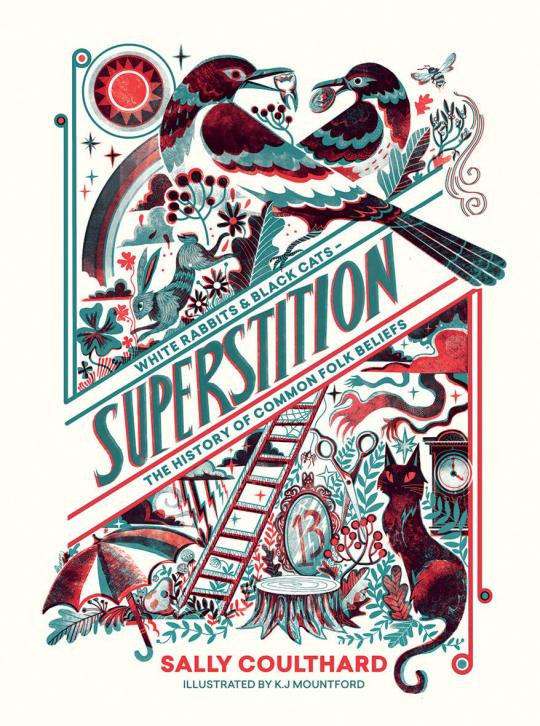
182. Superstition: White Rabbits and Black Cats—the History of Common Folk Beliefs by Sally Coulthard, illustrated by K.J. Mountford. I didn’t realize when I picked it up that this book has a gimmick. It has a Light Side and a Dark Side, which are upside down of each other, detailing good luck and bad luck superstitions respectively. That’s fun. What’s less fun is that the Dark Side often has black text on a dark background, making it a bit of a pain to read. The information within it is good, and I learned some things, but I do wish it had a bibliography somewhere.

183. Fantastic Creatures of the Mountains and Seas by Jiankun Sun, illustrated by Siyu Chen, translated by Howard Goldblatt. I started the year by reading a bestiary, so I figured I’d end the year the same way. This is a translation of a modern commentary on the classic Chinese Guideways through Mountains and Seas. It is by no means a complete coverage of the work—115 or so creatures and gods were selected from it, given commentary and lovely three color illustrations (white, black and red). The publisher’s foreword talks about how tied together age and respectability are among China’s academic scene, so apparently publishing this book, with both authors in their early 20s, was something of a risk. But the perspective is definitely different, and breathes life into the stories and creatures therein. If you want a more scholarly, complete coverage of the Guideways, read Richard Strassberg’s A Chinese Bestiary. But this is a great second stop for exploring this text.
#reading log#fish#marine biology#monster book#star wars#paranormal#occult#guideways through mountains and seas#superstition#food#atlas obscura#mermaid#botany#children's books
82 notes
·
View notes
Photo

The Bosh is a goat-like creature found in the Bestiaries of China. The Bosh is described as a goat-like creature with four ears, nine tails, and an extra pair of eyes on its back. There is a legend about the Bosh that if you wear the skin of a Bosh as a belt, you will not be afraid. People believe that the Bosh could have been a real species of goat that had eyespots on its back but was overhunted and driven to extinction for Chinese medical practices.
#bosh#boshes#china#chinese#Chinese myth#Chinese myths#Chinese mythology#Chinese legend#Chinese legends#Chinese folklore#bestiary#bestiaries#guideways through mountains and seas#goat#goats#bovine#bovines#cryptid#cryptids#unknown#paranormal
303 notes
·
View notes
Text
Lamia, Quettamum

“Unknowable” © David Palumbo, accessed at ComicArtFans here
[The World Tour comes to Asia, and like with the previous stops in Europe and North America, it’s not as if the Creature Codex hasn’t already done a lot of Asian monsters. So I am going to be mixing it up between familiar mythoi (yokai, Filipino mythology, The Guideways Through Mountains and Seas) with some less familiar ones. Like the lore of Balochistan, one of the provinces of Pakistan. The Mum of Quetta is a local bogeyman with roots in the late 19th century, when Quetta became a site of British imperial attention. A statue of a sphinx erected in a graveyard became the focal point for stories of a man eating monster. Thanks to @abominationimperatrix for sharing this awesome story with me!]
Lamia, Quettamum
CR 9 CE Magical Beast
This great leonine creature has the head of a human woman, although her teeth are still quite sharp.
A quettamum is a particularly bestial offshoot of lamias. They are sometimes mistaken for sphinxes, which they closely resemble. Indeed, some sages believe that quettamums are hybrids of sphinxes and lamiae, although the quettamums deny this violently. Quettamums are cruel hunters, lurking around the margins of settlements in order to catch and eat children, their favorite food. A quettamum can use its senses through any statue with a face over surprising distances, and they use this to spy on their neighbors and look for victims. They are notorious bogeys in any area where they are known, and a town where all the statues have covered faces or are defaced may be in a quettamum’s territory.
A quettamum prefers to attack from ambush. If stalking prey, this may be a conventional surprise attack, but at their lairs, quettamums spend much of their time surveying their surroundings in statue form. They usually decorate their territory with other sphinx-like statues, making it confusing to determine which is the monster and which is just a statue. They typically cloak themselves in magical silence before pouncing, the better to conceal the screams of their victims. Quettamums dislike fair fights, and will typically try to run if they are not in a position of strength within a few rounds.
Other lamiae tend to have a mixed relationship with quettamums. The quettamum cannot change its shape or disguise itself magically as a humanoid, so they are rarely suitable for missions of corruption. But they are intelligent and magically gifted all the same, and make excellent spies. Some, especially lamia matriarchs, view quettamums with a sense of condescension, treating them as poor relations. Quettamums tend to get along well with cultists of Areshkagal, and fiendish and half-fiend quettamums can be found in the Abyssal layer of the Blood Clefts.
Quettamum CR 9
XP 6,400
CE Large magical beast
Init +5; Senses darkvision 60 ft., low-light vision, Perception +13
Defense
AC 23, touch 15, flat-footed 17 (-1 size, +5 Dex, +1 dodge, +8 natural)
hp 114 (12d10+48)
Fort +14, Ref +13, Will +10
Immune confusion and insanity effects; SR 20
Offense
Speed 60 ft.
Melee bite +17 (1d4+6 plus Wisdom drain), 2 claws +17 (1d6+6/19-20 plus grab)
Space 10 ft.; Reach 5 ft.
Special Attacks pounce, rake (2 claws +17, 1d6+6/19-20)
Spell-like Abilities CL 12th, concentration +14
At will—stone shape
3/day—mirror image, quickened silence (DC 14), stone call
1/day—statue, stone tell, transmute rock to mud
Statistics
Str 22, Dex 20, Con 18, Int 15, Wis 19, Cha 15
Base Atk +12; CMB +19 (+23 grapple); CMD 35 (39 vs. trip)
Feats Dodge, Great Fortitude, Improved Critical (claw), Iron Will, Mobility, Quicken SLA (silence)
Skills Acrobatics +14 (+26 when jumping), Bluff +12, Climb +15, Craft (sculpture) +8, Intimidate +8, Perception +13, Stealth +14, Survival +13; Racial Modifiers +4 Bluff, +4 Stealth
Languages Abyssal, Common, Sphinx
SQ statue sight
Ecology
Environment temperate hills
Organization solitary or pride (2-6)
Treasure standard
Special Abilities
Statue Sight (Su) By concentrating, a quettamum can use its senses through any statue within 600 feet. This functions as an enter image spell (CL 12th), except that the quettamum can make Perception checks through any statue with a face, not just images of itself. A quettamum cannot animate an image or speak through it.
Wisdom Drain (Su) A creature bitten by a quettamum takes 1d4 points of Wisdom drain (no save).
56 notes
·
View notes
Text
So you want to read… The Classic of Mountains and Seas
I’m excited for you! It’s really good.
Where do I start?
Shānhǎi Jīng, or The Classic of Mountains and Seas, is a collection of ancient Chinese mythic compendium of geography and natural science. The form which remains today was first penned in the Han Dynasty, but many theorise that the text is much older, dating back as far as the 4th century BCE. Authorship is much debated, with the text often attributed to legendary figures such as Dà Yǔ or Yi. The earliest known editor of Shānhǎi Jīng is Imperial Librarian Liú Xiàng of the Western Han. The title is also frequently romanised to Shan Hai Jing or Shan-Hai Ching, and may be seen in its Cantonese form of Sāan-hói Gīng. It is spelt with the characters 山海经 in Simplified Chinese, and 山海經 in Traditional Chinese.
I have been unable to track down any full English translations online, although sections are available in isolation.
Translations, Editions, and other Originals
Anne Birrell’s translation is popular, with helpful notes and additions to support the text.
The text can be accessed for free from The Chinese Text Project in Traditional and Simplified Chinese. A scan of a beautiful printed copy from the early 17th century is available from the US Library of Congress via the World Digital Library. If you do want to start learning Chinese, the BBC’s online Madarin course is very popular. The HelloChinese app is also highly rated. Characters are the same across Chinese languages, but Mandarin resources are generally the easiest to find.
Theory and Analysis
A breakdown of Shānhǎi Jīng and its history is available on Chinaknowledge. Digital Taiwan also has a detailed article on the topic.
Strassburg’s article A Chinese Bestiary: Strange Creatures from the Guideways through Mountains and Seas is an interesting read. Lust’s Chinese Popular Prints also comes highly recommended, as do Lewis’ Flood Myths of Ancient China, Gao’s Of Mountains and Seas, and Zhaoguang’s Memories of Foreign Lands in the Classic of Mountains and Seas, Illustrations of Tributaries, and Travel Accounts.
Modern Interpretations
Shānhǎi Jīng has been adpted into a number of modern dramas, of which this 2016 series seems to be the most popular. Several stunning animated versions have also been made, such as this one by YidanXie.
As a less popular Chinese epic, and one with a non-narrative structure, there are relatively few straight adaptations of Shānhǎi Jīng, but many Chinese or Chinese-inspired fantasies which are heavily influenced by it. These include Carole Wilkinson’s Dragon Keeper books and Grace Lin’s Where the Mountain Meets the Moon.
#the classic of mountains and seas#classic literature#reading list#chinese mythology#chinese literature#mandarin#chinese#chinese art#chinese calligraphy#reading#recommendations#q
302 notes
·
View notes
Text

The Changfu [Chinese mythology]
Foundation Mountain is a – presumably fictional – location mentioned in the ancient Chinese work Shan Hai Jing, the Classic of Mountains and Seas. Strange creatures dwell on the slopes of this mountain, such as a goat with four ears, nine tails and a set of eyes located on its back.
One of these bizarre species is the Changfu, a mythical bird with three heads and six legs. It also has a third wing on its back, but aside from these extra extremities it resembles a normal chicken.
Not much is known about their ecology or behaviour, but its meat has a special characteristic to prevent the eater from sleeping. Those who hunt and consume a Changfu will find themselves unable to sleep.
Source:
Strassberg, R. E., 2002, A Chinese Bestiary: Strange creatures from the Guideways through the Mountains and Seas, 313 pp., p.87-88.
(image source: Behane on Deviantart)
51 notes
·
View notes
Photo

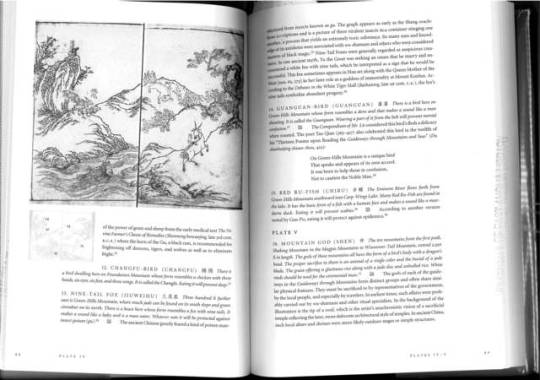
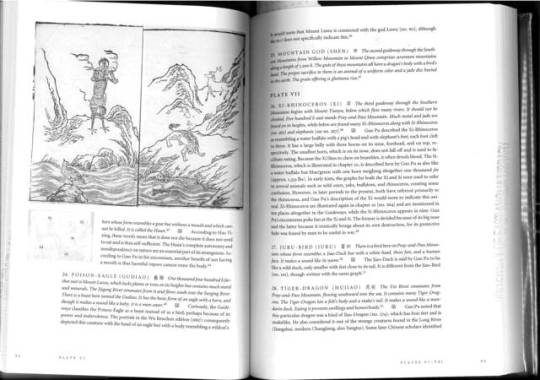




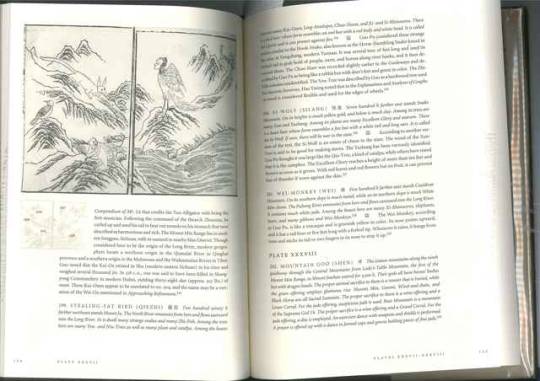
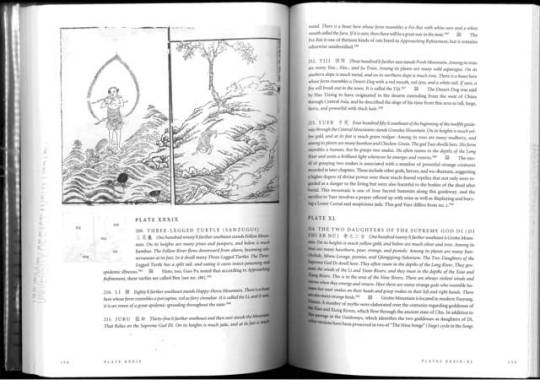
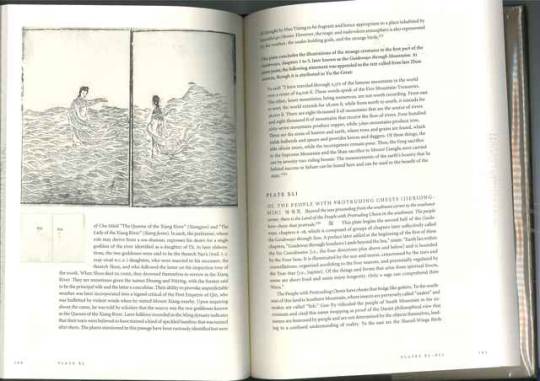
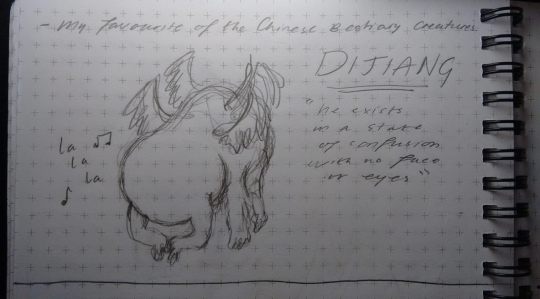
During the start of the reading week, I visited UEA library, with my boyfriend who goes to UEA, and looked up Bestiary to see if there was any interesting books on the subject. I found this one book on Chinese Bestiary that I thought had some curious illustrations and interesting information regarding some Chinese creatures. I attached some of the photocopied pages from the book which particularly fascinated me. My favouite creature however was the Dijang, I just love that the Chinese had a mythical beast that was kind of useless, quote “existing in a state of confusion”, it’s adorable.
#BA2a Character Bestiary#Chinese Bestiary#Book#A Chinese Bestiary Strange Creatures from the Guideways through Mountains and Seas#Research#UEA#Library#Reading Week
1 note
·
View note
Text
Beside the Edge of the World

Opening this Saturday, Nov. 9: exhibition Beside the Edge of the World began with a treasured book in The Huntington’s collections: a first edition of Thomas More’s Utopia, printed in 1516. This 500-year-old text served as a jumping-off point for the fourth year of /five, The Huntington’s contemporary arts initiative, in partnership with Los Angeles arts organization Clockshop.
Three artists and two writers were invited to consider More’s classic work as they explored The Huntington’s collections. The process of discovery started with ideas of mapping borders and edges, temporarily forgotten histories, peoples whose lives had been carefully recorded—and then forgotten—and utopian experiments in communal living. Many of these places and the people who challenged the dominant narratives of history existed on the periphery.
Read more about each project below:

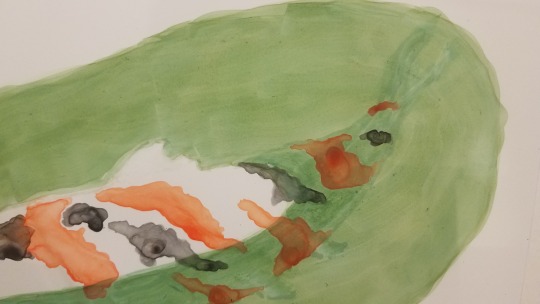
Artist Nina Katchadourian’s work Strange Creature was inspired by The Huntington’s collection of sixteenth- and seventeenth-century maps and books, as well as the ancient Chinese mythological text Shan Hai Jing (Guideways through Mountains and Seas). The myriad of creatures depicted in these ancient texts offered a challenge: How much have we really seen of the world, and how well do we know it? Katchadourian imagined a creature, somewhat familiar but also strange, slowly surfacing from our own Chinese Garden’s Lake of Reflected Fragrance. Her installation suggests that there is more around us than we can see or perceive—literally, and perhaps also in an otherworldly sense. See if you can catch a glimpse of her creation in the Chinese Garden.

Writer Robin Coste Lewis was inspired by a particular passage in Henry David Thoreau's canonical Walden; or, Life in the Woods. In a chapter titled “Former Inhabitants; and Winter Visitors,” Thoreau describes the community of free Blacks that had been living around Walden Pond long before Thoreau arrived. For Lewis, this passage contained a hidden call to the rediscovery of African American histories woven into the story of Concord, Massachusetts, and hence, America. In order to extend Thoreau’s experiment, she omitted much of the chapter’s text and rearranged the remaining lines to emphasize, lyrically, the free Black community that had once called the woods home.

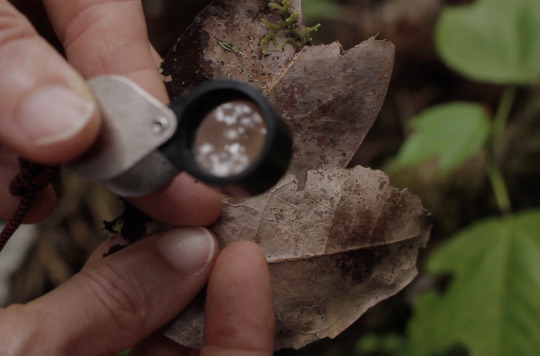
Artist Beatriz Santiago Muñoz’s film Laurel Sabino y Jagüilla takes its title from a species native to the artist’s birthplace and home on the island of Puerto Rico, a flowering plant now endangered by logging and wood harvesting. Magnolia is an ancient genus, dating back 20 million years; its family, Magnoliaceae, has survived ice ages, mountain formation, and continental drift. Filmed in the rain forest of Puerto Rico and in the gardens of The Huntington, the work imagines the relationship of Magnolia splendens to utopia, photography, soil, vision, and time.


Writer Dana Johnson’s short story Our Endless Ongoing reimagines the life of Delilah Beasley in early twentieth-century California. Delilah Leontium Beasley (1871–1934), an American historian and columnist for the Oakland Tribune, was one of the first African American women to be published regularly in a major metropolitan newspaper. She also became the first person to document the overlooked but significant history of California’s Black pioneers, in her book The Negro Trail-Blazers of California (1919), published the same year as the founding of The Huntington.


Artist Rosten Woo created Another World Lies Beyond as a series of interrelated stories told through audio, projection, and artifact, installed in the gallery and in the gardens to invite contemplation and political reflection. The narrative through-line is the life and work of Robert V. Hine (1921–2015), a scholar of California utopian communities whose papers are housed at The Huntington. Each audio story offers a glimpse of an idea of the perfect state and the world just beyond it. Additionally, a short animated film by Woo brings together all the illustrations from John Russell Bartlett’s failed 1857 survey of the U.S.–Mexico border, included in the Report on the United States and Mexican Boundary Survey.
images:
Nina Katchadourian looks at maps from Theatrum Orbis Terrarum (Theatre of the World) by Abraham Ortelius, ca. 1606. Photo by Kate Lain.
Nina Katchadourian (b. 1968), Study for “Strange Creature,” 2019. Watercolor, pencil, gouache on paper. Courtesy of the artist, Catharine Clark Gallery, and Pace Gallery.
Robin Coste Lewis (b. 1964), excerpt from poetry chapbook Inhabitants and Visitors, Los Angeles, Clockshop, 2019.
Beatriz Santiago Muñoz filming in The Huntington’s gardens. The Huntington. Photo by Kate Lain.
Beatriz Santiago Muñoz (b. 1972), film still from Laurel Sabino y Jagüilla, 2019. Courtesy of the artist.
Dana Johnson at The Huntington. Photo by Kate Lain.
Dana Johnson (b. 1967), “Our Endless Ongoing” featured in Trailblazer: Delilah Beasley’s California, Los Angeles, Clockshop, 2019.
Rosten Woo at The Huntington. Photo by Kate Lain.
Rosten Woo (b. 1977), excerpt from Another World Lies Beyond, 2019.
Support for this exhibition is provided by the Mike Kelley Foundation for the Arts, the Philip and Muriel Berman Foundation, the Pasadena Art Alliance, and WHH Foundation.
Beside the Edge of the World is a Huntington Centennial Exhibition. The Huntington’s Centennial Celebration is made possible by the generous support of Avery and Andrew Barth, Terri and Jerry Kohl, and Lisa and Tim Sloan.
#5atTheH#100atTheH#Utopia#Thomas More#Nina Katchadourian#Robin Coste Lewis#Beatriz Santiago Muñoz#Dana Johnson#Rosten Woo#contemporary art#library#art#botanical
34 notes
·
View notes